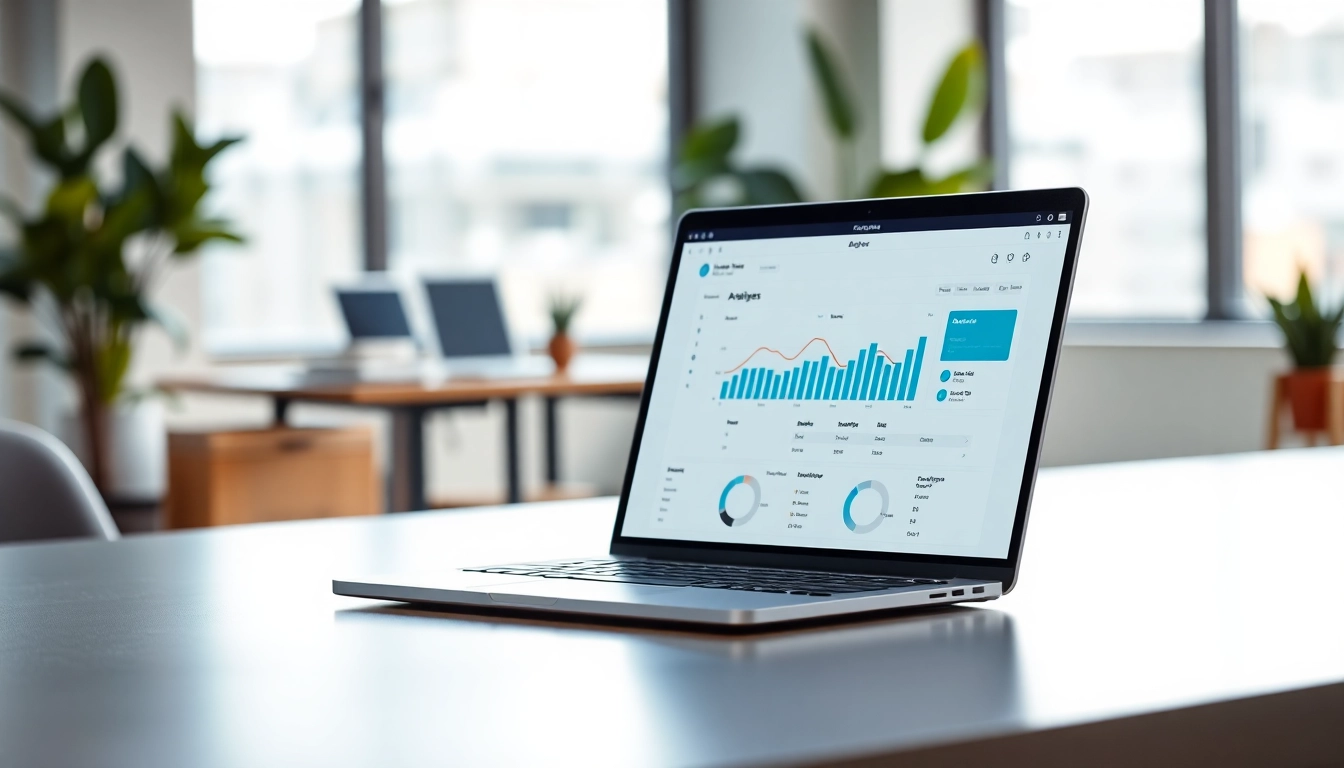
What is Competitive Intelligence?
Definition and Importance
Competitive intelligence (CI) refers to the act of gathering, analyzing, and utilizing information regarding competitors, market conditions, and overall industry trends. This strategic process is essential for organizations aiming to gain a competitive advantage in their respective markets. Unlike mere market research, competitive intelligence involves a systematic approach to collecting actionable insights about the external environment, providing organizations with strategic value that can influence decision-making processes and promote growth.
The significance of competitive intelligence lies in its ability to foster informed decision-making. By understanding the competitive landscape, companies are better equipped to identify opportunities, mitigate risks, and enhance their market positioning. According to scholars and practitioners alike, having robust competitive intelligence systems in place can often be the deciding factor between a thriving business and one that inevitably falls behind.Competitive intelligence not only guides tactical maneuvers but also shapes long-term strategic goals, ensuring that organizations remain proactive rather than reactive.
Types of Competitive Intelligence
Understanding the various types of competitive intelligence is crucial for effectively leveraging the insights gathered. The primary categories include:
- Market Intelligence: This involves gathering data related to market trends, customer preferences, and demographics. It helps businesses understand the broader landscape they operate within.
- Competitor Intelligence: Focused on understanding direct and indirect competitors, this type entails analyzing competitors’ strengths, weaknesses, pricing strategies, and product offerings.
- Product Intelligence: Gathering insights on products—both existing and emerging—enables organizations to identify gaps in their offerings and areas for innovation.
- Customer Intelligence: Analyzing customer needs, behaviors, and feedback can provide critical insights that shape marketing strategies and product development.
- Environmental Intelligence: This encompasses the macroeconomic factors, regulations, and industry trends that could impact an organization’s operations and strategic positioning.
Objectives of Competitive Intelligence
Organizations implement competitive intelligence with several key objectives in mind:
- Improved Strategic Planning: By understanding competitor actions and market trends, businesses can devise more informed and effective strategic plans.
- Enhanced Risk Management: With CI, organizations can preemptively identify risks and develop strategies to mitigate them before becoming significant issues.
- Informed Product Development: Insights drawn from CI help in designing products that meet market demands and fill gaps left by competitors.
- Adaptation and Agility: Organizations are better prepared to respond to changing market conditions, allowing for quicker pivots when necessary.
Benefits of Implementing Competitive Intelligence
Market Positioning
One of the most visible benefits of competitive intelligence is effective market positioning. By comprehensively analyzing competitors and market conditions, organizations can identify unique selling propositions (USPs) that set them apart. This helps in crafting targeted marketing strategies that resonate with specific audience segments.
For instance, a technology company analyzing its competitors’ product offerings may decide to highlight unique features not found in rival products. This distinct approach can create a niche that attracts consumers looking for specialized solutions.
Risk Mitigation
Competitive intelligence serves as a form of insurance against potential risks that businesses may face. By continuously monitoring competitors and industry shifts, organizations can identify early warning signs of potential threats. This proactive approach allows them to develop contingency plans to navigate challenges effectively, thereby minimizing disruption to their operations.
Furthermore, by analyzing patterns in competitors’ failures or downsizing, companies can learn valuable lessons and apply them to improve their business practices.
Enhanced Decision-Making
Access to reliable and relevant competitive intelligence allows decision-makers to base their choices on data rather than instincts. Informed decision-making is critical for creating strategies that align with present and future market conditions. The use of competitive intelligence tools can empower executives to act confidently, whether investing in new technologies, entering new markets, or modifying pricing strategies.
For example, during the planning phase for a new product launch, insights gathered from competitive intelligence can guide the timelines, budgeting, and marketing campaigns necessary for success.
How to Gather Competitive Intelligence
Data Collection Techniques
Gathering competitive intelligence involves utilizing various data collection techniques, including:
- Secondary Research: This involves gathering information from published sources such as market reports, whitepapers, and academic research.
- Primary Research: Conducting surveys, interviews, and focus groups helps in collecting firsthand insights from customers and stakeholders.
- Social Media Monitoring: By observing competitor activity on social media, organizations can gauge customer sentiment and engagement strategies.
- Website and SEO Analysis: Tools such as SEMrush or Ahrefs can provide insights into competitors’ web traffic, SEO performance, and keyword strategies.
Utilizing Technology and Tools
The role of technology in gathering competitive intelligence cannot be overstated. Various tools exist to facilitate the process of data collection and analysis:
- Research Tools: Platforms like Statista and IBISWorld provide statistical data and reports essential for market analysis.
- Social Listening Tools: Tools like Hootsuite or Brandwatch allow organizations to monitor mentions of their brand and competitors on social media platforms.
- Data Analytics Software: Solutions such as Tableau or Google Analytics enable organizations to visualize data and trends effectively.
Analyzing and Interpreting Data
Once data has been collected, the next critical step is analyzing and interpreting it to extract meaningful insights. This may involve:
- Identifying Patterns: Analyzing data can unveil trends, allowing organizations to make predictions about their market trajectory.
- SWOT Analysis: Performing a SWOT analysis (Strengths, Weaknesses, Opportunities, Threats) can provide a structured approach to understanding organizational positioning against competitors.
- Scenario Planning: Creating various market scenarios can help organizations prepare for different futures based on current intelligence.
Challenges in Competitive Intelligence
Ethical Considerations
While gathering competitive intelligence, organizations must navigate a landscape filled with ethical considerations. Moral obligations to respect competitors’ intellectual property rights and confidential information must be upheld. Engaging in illicit activities, such as industrial espionage, can lead to legal consequences and damage a company’s reputation.
Establishing a code of ethics for competitive intelligence is vital. Organizations should prioritize legal methods of data collection while maintaining transparency and integrity in their research practices.
Data Overload
In an age where data is abundant, one of the most significant challenges is sifting through vast amounts of information to extract relevant insights. Organizations may often suffer from analysis paralysis, where the sheer volume of data impedes their decision-making process.
To counteract data overload, businesses can streamline their data collection processes by focusing on key performance indicators (KPIs) that align with their core objectives. Additionally, adopting efficient analytical tools can help consolidate information and filter out noise.
Staying Updated
Competitive intelligence is not a one-time effort; it requires ongoing monitoring and adaptation. Given the rapidly changing market dynamics, organizations must continuously update their knowledge to remain competitive. Failing to do so can result in outdated strategies and missed opportunities.
Establishing a regular review process for competitive intelligence can help companies stay attuned to market shifts. Utilizing automated alerts and news aggregators can also ensure that CI teams receive timely insights from trusted sources.
Measuring the Effectiveness of Competitive Intelligence
Key Performance Indicators (KPIs)
To determine the effectiveness of competitive intelligence initiatives, organizations should establish relevant KPIs. Examples of effective CI KPIs include:
- Market Share Growth: Tracking changes in market share can indicate how well CI strategies are supporting growth objectives.
- Response Time to Market Changes: Measuring how quickly an organization can respond to competitor moves is an indicator of its agility.
- Sales Performance: Assessing the impact of competitive intelligence on sales performance can provide insights into the effectiveness of implemented strategies.
Adjusting Strategies Based on Insights
The value of competitive intelligence is ultimately realized when insights lead to actionable strategies. Organizations must be willing to pivot their plans based on the intelligence gathered—whether that’s altering pricing models, enhancing marketing campaigns, or innovating new products.
Assessing feedback metrics and return on investment (ROI) from these adaptations will help organizations refine their competitive intelligence processes and ensure continuous improvement.
Continuous Improvement Framework
To maintain a competitive edge, companies should adopt a continuous improvement framework in their competitive intelligence efforts. This involves regularly reviewing results, gathering feedback from teams, and adjusting methodologies based on evolving market conditions.
Incorporating lessons learned from ongoing CI initiatives will create a sustainable cycle of improvement, enabling organizations to remain ahead of their competition.








